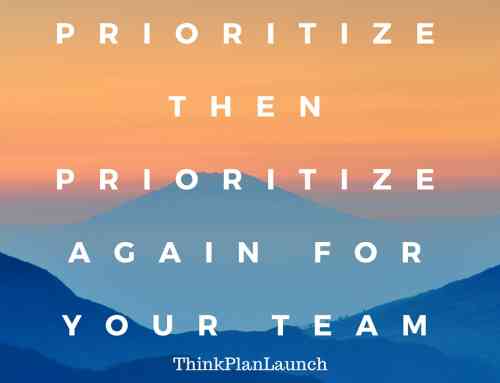Table of Contents
High-I Leadership
The High-I stands for “influencer” as explained in detail in our in-depth look at each personal behavioral style as determined in a DISC assessment. The measurement of this behavioral style determines how a person interacts and influences others to share a point of view. High-I characteristics and be a part of the personality of influential leaders who can motivate a team into action. They are genuine “people-persons” with high optimism. The enthusiasm that they posses is contagious and they can easily rally others into action. However, this doesn’t make every High-I fit to be a leader, just like every High-D isn’t fit to be a leader. Just like every other behavioral style, they have weaknesses to go along with their strengths. In this DISC series we look into skills for the High-I which will make them a more effective manager or leader.
The High-I leader has many advantageous. Charming, confident, influencing, enthusiastic, the High-I leader builds trust and persuades others to accomplish goals. This leader brings creative solutions to challenges and knows how to negotiate conflict. The High-I derives enjoyment from working with others and gaining popularity and a good reputation. The High-I leader will create a friendly environment filled with a few laughs and memorable moments. There are of course some disadvantages. High-Is can be overly emotional, place too much emphasis on how other perceive them, oversell, and be too trusting of others among other things. Their behavioral profile clashes with others such as the introverted High-C. Their behavior puts them at risk of being taken for granted by others and thought as someone who doesn’t focus on results. For the High-I to increase effectiveness, it is best to evaluate the behavioral styles of each team member to determine the best way to communicate. A different approach is needed for each style for them to be a good leader.
High-Is are trustworthy but trust others too much
The High-I leader is a naturally trustworthy person. They are smooth talkers and know how to show themselves in a good light. Others find them inspiring and believe in their abilities. This can be a great way to motivate others, but in the case that they oversell themselves, it can lead to a breakdown of trust. In addition, as a leader, they tend to place too much trust in others. They are prone to not pay attention to the small details and often overlook imperfections in others. They are quick to delegate tasks which might be outside the abilities of others. Their natural enthusiasm and optimism can restrict their judgement.
With this disadvantageous comes potential conflict for the team and a decline in leadership skills for the manager. The High-I must observe others carefully so that they can objectively delegate assignments. The keyword is objectivity. It is natural for the High-I to bend to emotions and impulsiveness. Subjective judgement allows them rationalize to themselves and make calls that others might find improper.
Also, in their high trust in others comes a tendency to under-instruct. Directions given can be vague or lacking in detail which leads to confusion and disappointed at unexpected results. The High-I must practice diligence and define goals and outcomes and should enable others with information so that they can complete their tasks.
Worst of all, is when the High-Is jeopardize their organization by placing trust in malignant or incompetent people. An extreme example of this would if a pilot decided to let a child passenger take control of the airplane for entertainment. This behavior is usually outside their immediate understanding of consequences. This might be an extreme example, but, the same concept can be applied to organization.
An organization must develop strict protocols when involving outsiders to sensitive information or access. A High-I leader must understand their natural tendencies to trust others too much and develop a behavior that counters their “gut instincts.” Checks and balances are a good way to overcome this disadvantage. The High-I leader should enlist the extra scrutiny of the High-C to help balance decisions. While their styles may clash, the second point of view may shed light into areas that the High-I would normally overlook.
Feedback from the team is a great way to make decision making more accurate. Getting feedback is through good communication.
Communication protocols for the High-I
While the High-I is a natural communicator, they have a few areas that they will need to look at for them to maintain their influence on others. The first area that the High-I will need to look at is how they display their emotions. There are many scenarios where maintaining a poker face might be necessary in the workplace. The over-expression of jubilant emotions or frustration can endanger their causes. In the case of talking with their team, it is important for the High-I to remain calm so that important points are communicated. It is very easy for a High-I to be led on tangents and get distracted by unimportant topics. Also, when negotiating with others, the tight control of emotions is essential to strike the best deals.
Another pitfall for the High-I is a propensity for being a situational listener. The High-I seems to listen to what is convenient or favorable. Negativity, criticism, or the like, can be ignored. This brings a lot of disadvantages for the High-I led team. Misjudgement can lead to failure. Being a good listener means listening to everything and everyone. That includes contractors as well. Catching potential problems early can help turn around an organization so that they are on the correct path. Listening is key to make such a turnaround. While it pains the High-I to listen to undesirable realities, it is necessary for them to achieve success consistently. This doesn’t mean that they should react to all criticism, as it is just as easy for others to be wrong.
Next, a High-I leader will need to make sure that they are not over-verbalizing. It becomes tedious for some to hear the same slogans, chants, and promotions over and over. While the High-I can inject a lot of fun into a situation, it is just as easy for them to bore others. A tech enthusiast might be able to rally a bunch of engineers, but will do little to excite a room full of fashion designers. Know what excites other people, not yourself. Aligning your enthusiasms to that of others will empower you to achieve influence.
Finally the High-I should challenge others. Their trusting nature inhibits them from being able to ask the tough questions. The desire to be liked and avoid conflict makes it difficult for High-Is to adequately vet other people and ideas. It is wise to develop a method of spotting deception. Also, people who are benevolent but are incompetent must be assessed through proper communication methods. It is as simple as asking for further explanations for ideas and proposals. Being dispassionate and inquisitive can bring the skeletons out of the closet. Interrogation isn’t the goal. Disqualifying potential problems is the goal. High-Is will benefit from investigative skills and a bit of skepticism.
Controlling High-I impulses
Impulsiveness is common for the High-I. A lot of this is due to the fact that High-Is aren’t fond of making detailed plans and sticking to them. This can lead to frustration for senior managers who must follow a singular vision and strategy to realize success. Impulsiveness combined with an easy trust of others can lead to disaster. As a leader, the High-I must control impulses to maintain consistency and transparency for team members. Like advised before, having a High-C as a close second is a great way to root out bad decisions from plaguing an organization.
Those who are especially terrible of letting impulses control them should seek help from a counselor. Certain personality disorders are cause impulsive behavior across all of the DISC behavioral types. Feedback, planning, and risk-management should be built into decision making processes for the High-I.
When it comes to hiring, don’t let bias affect your judgement. Impulsive hires are a part of the wasteful activities.
Time management issues
Especially important for managers is the concept of time management. The optimism that a High-I brings to the table can be a disadvantage when it comes to estimating the time to complete a task. If you combine the other weaknesses (over-delegation, under-instruction, high trust of others, impulsive behavior, and a lack of planning) time management becomes an incredible feat for the High-I manager. Tackling this issue is a high priority. No matter what other skills are needed for the job, good time management will make a leader more effective by eliminating wasted time and multiplying output. For the team it reduces stress and the need for creating tight deadlines. It can prevent crises that can cripple operations and cost money.
A leader of any field must sweat and toil to make one of the most precious resources (time) wisely used. There are a number of methods which can be easily found on the internet. Finding one that is suitable for yourself and the organization is crucial for success. Implementing complex processes might only make things worse.
The bottom line for High-Is
These steps will make the High-I a better leader and even more influential:
1. Undersell and over deliver
Like many politicians do, big promises are easily made and soon forgotten once in office. True leaders who want to have long term success must tone down their selling abilities by being realistic. In many ways, underselling can lead to pleasant surprises. These little moments of value creation leads to long term gains.
2. Create a list of priorities
Control impulses by making a priorities list. This serves as a guide to protect against impulses. By defining what is a priority, it becomes easier to determine what is important. By defining non-priorities, it becomes easier to determine what will be detrimental. Decision making will become easier and impulses can be dealt with.
3. Make trust some that is earned
In the business and political world, there are winners and losers. Many of those who are dominant get there through deception and fraud. Some are mildly dishonest and others are just ignorant or want to make a quick sell. Always be on guard.
4. The devil is in the detail
In many cases, it could be that small thing that is missing which creates a catastrophe. Freak accidents and uncommon complications results from glossing over the details. Likewise, those who pay attention to detail can win big. If the priority list calls for it, be detailed.
5. Develop your time management system
Take your time to make a system that will work for you. Experiment. As a leader, you have control over your destiny and you have the opportunity to lead others to success. Take advantage of the situation by investing this system.
6. Management is more than delegation
Instructing others, providing guidance, and estimating and measuring performance of others is critical for a successful leader and manager
7. Listen and listen again
The harsh realities are needed to be discovered to make improvements. A leader is as much of a listener as an orator. Take notes, make recordings, ask for feedback and questions. Do whatever it takes to gather all the facts and ideas.
8. Relax
Enthusiasm is great, but if excessive it can become tiring. Imagine watching children’s television programs for 40 hours a week with a TV show host blurting out commands to do, learn, read, all in a high-pitched voice with exaggerated body language. As a High-I leader, you might be hosting your own version of this show to others. Relax.
9. Practice zen
Promote peacefulness. Just like the need to relax, there is also a need for quiet, focused, work. The enthusiasm, passion, and speaking skills of the High-I is great. But like everything, too much can be worse than too little.





Leave A Comment